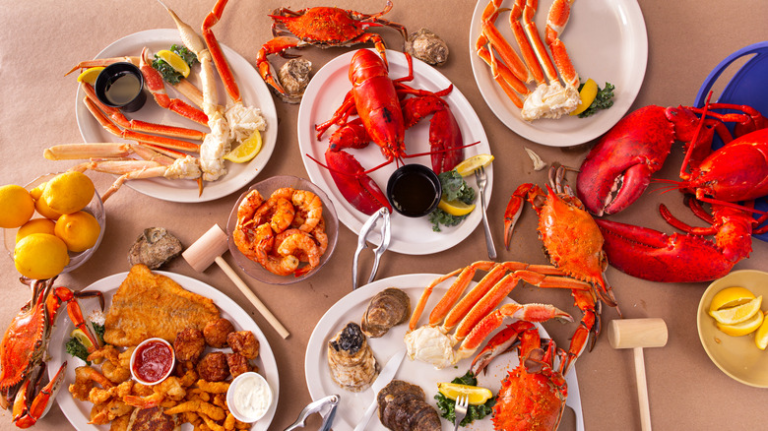Cultural Foods That Tell Stories of Legacy and Remembrance
Food is more than sustenance; it carries history, culture, and meaning. Across the globe, cultural foods act as vessels for stories of legacy and remembrance, particularly during moments of deep reflection like funerals. These foods don’t merely fill stomachs—they nourish souls, preserve memories, and connect generations. Exploring the world of commemorative meals reveals how different cultures celebrate life, honor the departed, and sustain a legacy of togetherness.
In this exploration, we’ll delve into how food becomes intertwined with customs and rituals tied to remembrance. These dishes provide comfort, invoke nostalgia, and in some cases, tell the story of an entire lineage. For readers navigating topics like funeral plans, understanding the cultural significance of food can illuminate how traditions play a role in preserving memories.
Food as a Universal Language of Remembrance
When words fall short in the face of grief, food steps in as a universal language. Across cultures, meals prepared during memorial services or celebrations of life reflect local ingredients, faith traditions, and familial customs. This shared language transcends borders, illustrating that no matter where you are, food has the power to bring people together and evoke a sense of belonging.
For example, in Mexico, pan de muerto—a sweet bread dusted with sugar—is baked during Día de los Muertos. This bread symbolizes the cycle of life and death, with its circular shape representing the eternal nature of the soul. Similarly, in the southern United States, dishes like casseroles and fried chicken are common offerings at gatherings, reflecting a sense of community and the deeply rooted practice of coming together to share in loss and celebration.
Culinary Rituals as Acts of Legacy
Legacy is often built around the rituals we preserve, and cultural foods tied to remembrance play an integral role in this. These rituals serve as a bridge between generations, passing down not only recipes but also values and stories.
In Eastern European cultures, koliva—a dish made of boiled wheat berries mixed with honey and nuts—is often served at Orthodox Christian memorial services. Each ingredient carries symbolic weight: the wheat represents resurrection, the honey symbolizes the sweetness of eternal life, and the nuts signify endurance. The preparation of koliva isn’t just about making a dish; it’s an act of storytelling, bringing family members together to honor their shared faith and ancestry.
Similarly, in East Asian cultures, offerings of rice, fruit, and tea are often made at ancestor altars. These foods are not consumed by the living but are seen as a way to nourish the spirits of the departed. This practice reinforces a familial bond that extends beyond life, keeping the legacy of ancestors alive in daily rituals.
The Role of Flavor and Memory
The flavors of cultural foods can evoke powerful memories, anchoring individuals to their past and their loved ones. Smell and taste have a unique ability to trigger recollections, which is why certain dishes become inseparable from the memory of those who have passed.
In Italy, dishes like lasagna or osso buco are often served at family gatherings following funerals. These meals aren’t chosen at random; they reflect familial comfort and familiarity. The smell of simmering tomato sauce or braised meat can transport someone to a childhood memory of Sunday dinners with grandparents or holiday feasts with extended family.
In West Africa, jollof rice often features prominently in communal gatherings, including celebrations of life. Its rich, spicy flavor and vibrant orange hue evoke warmth and community, reminding participants of the resilience and joy found even in mourning. Through these foods, the past comes alive, and legacies continue to thrive.
Regional Variations in Commemorative Foods
While the specific dishes may vary, the intent behind serving food in remembrance is universal. In Scandinavian countries, fish dishes like smoked salmon or herring are common, reflecting the region’s natural resources and culinary heritage. These meals remind participants of the shared bounty of the land and the enduring connection to their ancestors.
In the Philippines, the tradition of novenario—nine days of prayer following a loved one’s passing—is accompanied by offerings of kakanin, or sticky rice cakes. The stickiness of these desserts symbolizes familial bonds and the hope that the departed soul remains connected to the living.
In Jewish culture, bagels, lox, and kugel are often served during shiva, a period of mourning. These foods are practical for serving to guests while reflecting the simplicity and humility of the occasion. Each bite carries a sense of grounding, reminding mourners of the cycles of life and the importance of community support.
Culinary Evolution: Modern Takes on Tradition
As societies evolve, so too do their culinary traditions. In today’s multicultural world, the foods served in remembrance often blend traditional recipes with modern sensibilities. This fusion allows younger generations to connect with their heritage while adapting to contemporary lifestyles.
For instance, vegan or gluten-free versions of traditional dishes are becoming more common in diverse communities. A vegan pastelón (Puerto Rican plantain casserole) or gluten-free babka can still carry the essence of tradition while accommodating modern dietary needs. These adaptations ensure that cultural foods remain accessible, preserving their role in legacy-building for generations to come.
In addition, the rise of globalized cuisine means that people are increasingly exposed to commemorative foods from different cultures. This exposure fosters cross-cultural understanding and appreciation, allowing individuals to adopt and adapt rituals that resonate with their values and experiences.
Food as a Tool for Healing
Beyond its role in storytelling and legacy, food also serves as a tool for healing. The act of preparing a meal or sharing it with others can be deeply therapeutic, offering a sense of purpose and connection during times of grief.
In some Native American traditions, communal feasts are held to honor the deceased and support the grieving process. These meals are a time for storytelling, singing, and celebrating the life of the departed. The food itself—often prepared with ingredients like corn, beans, and squash—serves as a reminder of the land’s generosity and the enduring cycle of life.
Similarly, in Haitian Vodou ceremonies, food offerings such as fried plantains, goat meat, and rum are made to both ancestors and deities. These offerings are part of a broader spiritual practice, helping participants find solace and meaning in the face of loss.
Preserving Stories Through Food
The stories tied to cultural foods often outlast the people who created them. Recipes passed down through generations become tangible links to the past, preserving not just the flavors of a dish but also the memories and values of those who came before.
In Greek culture, the preparation of makaria, a meal served after funerals, is an opportunity for families to share memories and keep the legacy of the deceased alive. The dishes, typically simple and comforting, reflect the importance of humility and togetherness.
Likewise, in South Asian cultures, foods like biryani or samosas served during remembrance gatherings often come with stories of their origins—stories that highlight the resilience and creativity of ancestors who crafted these recipes under challenging circumstances.
These stories remind us that food is more than just sustenance; it’s a way of remembering, celebrating, and connecting. Each bite carries the weight of history, the warmth of community, and the promise of legacy.
Conclusion
Cultural foods are powerful symbols of legacy and remembrance, offering comfort, connection, and continuity in times of loss. They remind us that even as we grieve, we are part of something larger—a lineage of stories, values, and traditions that shape our identities.
For readers seeking to understand how food intersects with moments of reflection and celebration, the exploration of cultural cuisines offers valuable insights. Whether it’s the sweet simplicity of pan de muerto or the complex spices of jollof rice, these dishes speak to the universality of love and the enduring power of memory.
As we navigate the complexities of life and loss, the foods we prepare and share become anchors of meaning, grounding us in the legacies of those who came before and inspiring us to carry those stories forward.







